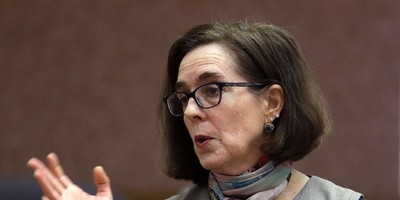Working through the spring, my father felt good about his potential win. That is until Election Day. He drove up to the Neva Lomason Memorial Library, his polling place, and noticed there were busses pulling up and unloading voters. He realized that they were not there to vote for some Army brat named Newt Gingrich, but for Jimmy Carter. Carter won that election, and my father, once again, lost a very close race.
My early experience in politics made me realize that voting is not just a right, but also a responsibility. In my opinion, the more voters, the better. Not just more registered voters, but more actual voters.
I was heartened to read that "more than 212,000 have been added to voter rolls so far this year as the Nov. 4 midterm election approaches," in the Atlanta Journal Constitution this past Tuesday. Taking "the total number of active voters in Georgia now tops 5.1 million -- up from more than 4.9 million as of March 1."
This is great news. More potential voters. But registration is only part of the story. While a voter has to be registered to vote, too many registered voters are not voting.
Voting patterns have changed in the last 12 years in Georgia. (Category names and data used in the following paragraphs are from the U.S. Census Bureau). Prior to 2008, blacks voted in lower percentages than whites, but from 2008, a higher percentage of blacks have voted than whites. United States Census data illustrates how much voting patterns by demographic groups have changed in Georgia.
Recommended
In 2002, 62 percent of eligible voters were registered (60 percent male, 63 percent female). This included 65 percent of non-Hispanic whites, and 61 percent of non-Hispanic blacks. When looking at who turned out once they were registered, 65 percent of those registered voted (40 percent of eligible voters). Men and women both voted at 65 percent of those registered. Non-Hispanic whites registered voted at 66 percent, with non-Hispanic-blacks voting at 63 percent of registered voters. This equated to 43 percent of eligible voters for non-Hispanic whites and 39 percent of eligible voters for non-Hispanic blacks.
In 2004, 62 percent of eligible voters were registered. When looking at who turned out once they were registered, 84 percent of those registered voted (53 percent of eligible voters). Of those registered, 84 percent of men and 85 percent of women voted. Non-Hispanic whites who were registered voted at 84 percent, with non-Hispanic blacks voting at 85 percent of registered voters. This equated to 57 percent of eligible voters for non-Hispanic whites and 54 percent of eligible voters for non-Hispanic blacks.
The patterns changed in 2008 with 71 percent of eligible voters registered (69 percent male, 72 percent female). This included 71 percent of non-Hispanic whites and 73 percent of blacks. When looking at who turned out once they were registered, 90 percent of those registered voted (64 percent of eligible voters). Of those registered, 90 percent of men and 91 percent of women voted. Non-Hispanic whites registered voted at 90 percent, with blacks voting at 93 percent of registered voters. This equated to 64 percent of eligible voters for non-Hispanic whites and 68 percent of eligible voters for blacks.
In 2010, women outvoted men by 1.5 percent, and 47 percent of blacks voted versus 44 percent of non-Hispanic whites voted, even though non-Hispanic whites had higher registration percentages.
In 2012, the gap between women and men voting grew to 5 percentage points (59 percent of men, and 64 percent of women). Blacks (65 percent) continued to outvote non-Hispanic whites (62 percent). This gap was driven not by higher registration numbers (because a lower percentage of blacks were registered) but a higher percent of those registered who actually voted.
The take away from all this data? While registration is a good indication, what really matters in the end is who turns out to vote.

























Join the conversation as a VIP Member